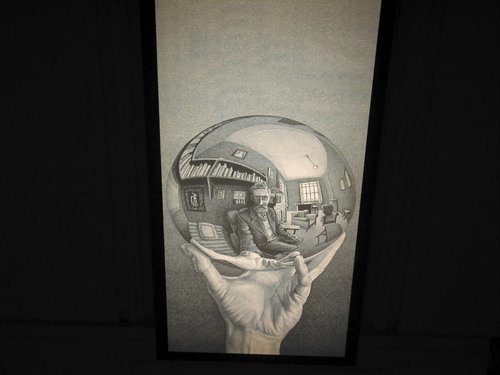
Maurits Cornelis Escher was born in Holland at the end of the XIX Century. He devoted his entire life to art, producing a great number of graphic design mezzotints and lithographs. He reached fame when he was already old.
In fact, since the second half of the last century, the success of his works continued to grow, and he is now considered one of the most influential artists in graphic design and art in general.
Exhibitions of his extraordinary visions of a world dominated by a geometry that challenges its own limits are continuing to attract and engage a high number of art enthusiasts around the world.
No matter how many times you look at his impossible perspectives, like the famous Relativity and Waterfall, his works defy our senses, creating an unsettling and fascinating feeling.
His drawings have been used in many books and record covers, and some of them are so famous that they have become part of our collective imagination.
You don’t need to be an art critic to be able to appreciate his work. You just need to follow his shapes and lines and get carried away into his amazing reality, which seems to belong to another dimension, where nothing is what it looks.
His works are the perfect match for any modern-looking interior design. You can easily find prints, add an elegant frame, and hang some of Escher’s magic on your office or home walls.
Escher was an introverted boy. He started to draw (and was incredibly good at it) since a very young age. He was fascinated by puzzles and geometry. An old school friend told a story about him, always making sure that the pieces of cheese inside his sandwich were in perfect order!
He lived in Italy and Southern Spain for a good part of his life. He studied the geometry of Moorish buildings and tiles in Granada and was greatly inspired by them.
He was forced to return to Holland only because he didn’t want to adhere to the fascist principles of the rising Italian and Spanish dictatorships.
He personally gave permission to the rock band Pink Floyd to use one of his works for the cover of On The Run.
His talent is so popular that Escher’s art can be found on T-shirts, key rings, greeting cards, gift boxes, comics, and movies, just to name a few.